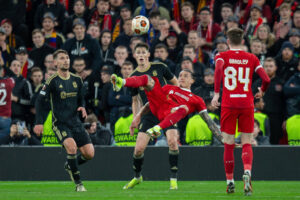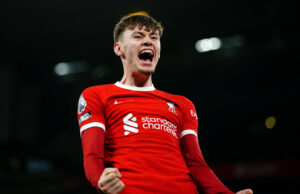Welcome to the new series of articles from Last Word on Football. This series looks at the grounds that are sadly no longer with us. Grounds that are famous not only in their particular country but also around the world. Grounds that will always have a special place in the hearts of a particular teams supporters and fans of football alike. Many will have loved them, some may have hated them; however, they could never be forgotten.
Never to be Forgotten Football Grounds: The Manor Ground – Oxford United
The Manor Ground
Like many old grounds, The Manor Ground was unique. It had four sides like most stadia in England, but each stand looked as though it had come from different grounds around the country.
The London Road end, where the home terrace were situated, had a large iron roof, allowing the chants and songs to bellow around the ground. On the west was the Beech Road stand, the home seating section, which held another large covered area, with the Osler Road stand in the east, which comprised of three separate stands. The away section, the Cuckoo Lane, was an open terrace which was built at an angle.
The Cuckoo Lane wasn’t the only unique angle about the Manor ground. The pitch famously had a slope towards the London Road end, something that the U’s would use as their advantage when attacking towards their fans in the second half of games.
The U’s played at the Manor Ground between 1925 and 2001, with the club starting out as Headington United before changing it’s name to Oxford in 1960. Two years later, the club was elected to the Football League, before the stadium’s attendance record was broken – which still stands today – when 22,750 watched an FA Cup quarter-final match against Preston North End two years later in 1964.
Headington United and the Early Days
Headington United’s first game at the Manor Ground after their move in 1925 kicked off late after the visitors’ bus broke down on the way to the ground. That said, it didn’t stop the visitors Deddington from winning the game 2-1.
In 1946, the first major development on the ground took place. A stand, purchased from Cowley FC, was erected on the Osler Road side. However, it collapsed the following winter but was rebuilt with seats at the Cuckoo Lane end. Two years later, the first terracing was built, stretching along the London Road end and a little up the Osler Road.
Headington turned professional in 1949, the same year they ended their ground share with Headington United Cricket Club. As a result, the club spent money on sunken terracing along the Osler Road, five rows of standing on the Beech and London Roads, and a dressing room on the corner of Beech Road and Cuckoo Lane with 180 seats above. Capacity had gone from 4,000 to 12,000.
By 1950, a new attendance record was set in three separate occasions, with 10,160 watching Headington play out a 1-1 draw with Yeovil Town in April 1950. The same year, the club installed a corrugated iron roof and back to the Osler Road stand, before erecting 18 floodlights on Poles. As a result, the Manor Ground became the first in the country to host a football match under lights when Headington beat Banbury Spencer in a friendly on 18 December, with a crowd of 2,603.
In 1953, the club built new terracing along the Beech Road to help increase the capacity for an FA Cup first-round tie against Millwall, before adding a further instalment when they welcomed Bolton Wanderers in the fourth round, which had a record capacity of 16,679.
Two years later, the Bolton Beech Road terrace was demolished and work commenced on a new 1,600 stand.
Oxford United and the Early Days
By 1960, Headington reformed to Oxford United and in 1961, the club put down a deposit on the Manor Ground freehold to buy it from Headington Sports Group Ltd. Completed in 1962, in line with the clubs’ election to the Football League, the Cuckoo Lane was then dismantled and replaced by a dozen rows of terracing, before the club installed a 4,000 capacity terrace in the London Road stand. The Manor Grounds famous 18 floodlights were then replaced by four pylons which stood in all four corners of the ground.
By 1964, FA Cup runs and increased attendances resulted in temporary stands being built on the Beech and Osler Road sides for the record-breaking matches against Blackburn Rovers and Preston North End, the latter of which still stands today.
The following year, extensive terracing was built at the Cuckoo Lane end, taking the capacity to 19,000, but five fans were injured during an FA Cup fourth-round tie against Watford when a part of the front wall of the London Road stand collapsed.
1970s/80s – Success on the Field
By 1973, crowd segregation was introduced. The London Road was divided, with the left being the section for the away supporters. Two years later, new dressing rooms, offices, board room, press box and players tunnel was opened under the Beech Road stand by Sir Matt Busby, manager of visiting Manchester United.
In 1982, fences were erected at the front of the Cuckoo Lane, Osler and London Road stands due to the increase in football hooliganism. Following promotion in 1984, the Osler Road terrace was demolished and replaced with new terracing and a new roof which ran up to the halfway line. The remainder of the terrace was replaced by two separate covered areas.
The ’80s were a solid decade for the U’s on the pitch. They were the first English team to win back to back promotions as they went from Division 3 in 1984 to Division 1, winning the Division 3 and 2 titles. In 1986, the U’s won the Milk Cup at Wembley, before spending a total of three years in the top flight.
The Decline of the Manor Ground, the Club and the Final Few Years
Ten years later, in 1992, the fence at the front of the London Road was removed, before the final two seasons at the Manor Ground were only granted special dispensation to play thee by the Football License Authority due to the clubs’ imminent move. The roof of the London and Beech Road stands were full of asbestos and failed to comply with safety standards. Terracing, in particular on the Beech Road, was beginning to crumble.
Studies suggested that for the club to stay at the Manor, it would cost several million pounds and all seating would reduce capacity to 2,803.
As good as the ’80s were on the pitch, the ’90s were tragic in comparison. There may have been one promotion during the decade, but the club suffered three relegations.
The final game at the Manor Ground was in May 2001. Andy Scott scored in a 1-1 draw against Port Vale, while new owner Firoz Kassam and his company, Firoka, purchased the Manor Ground for £6 million. In November 2001, Firoka was granted permission to build a hospital and 87 flats, before selling to Nuffield Nursing Trust for £12 million.
Classic Matches
Obviously, the Preston North End FA Cup tie will do down as one of the biggest games ever to be played at the Manor Ground. The attendance and the fact that the U’s were the first Division 4 side to reach the quarter-final of the competition remains was a key attribute to the occasion.
Prior to that, Headington United’s 4-2 defeat in the FA Cup fourth round to Bolton Wanderers was memorable. It was the first time the club, and Manor Ground itself, hosted a competitive game against Division 1 opponents.
In 1986, Oxford were in Division 1. One memorable game that season was when a certain Alex Ferguson took charge of Manchester United. His first game with the Red Devils was at the Manor Ground, which Oxford won 2-0.
In 1995, there was a ten goal thriller in Division 2. Oxford trailed 3-0 against Portsmouth, then 4-1 and eventually 5-2, but two goals in the last 90 seconds reduced an unlikely point and showcased one of the greatest comebacks the Manor Ground had witnessed.
Main Photo






